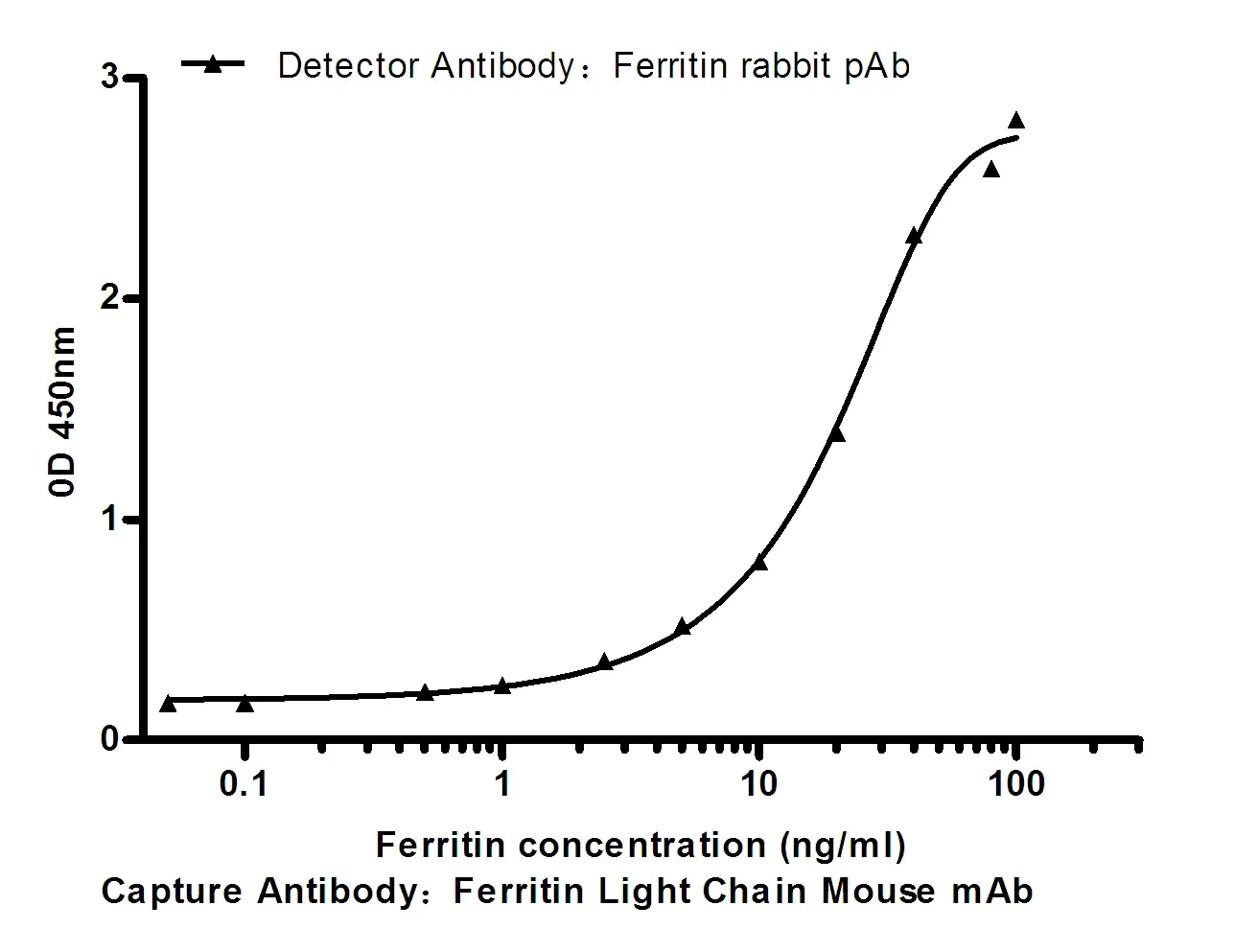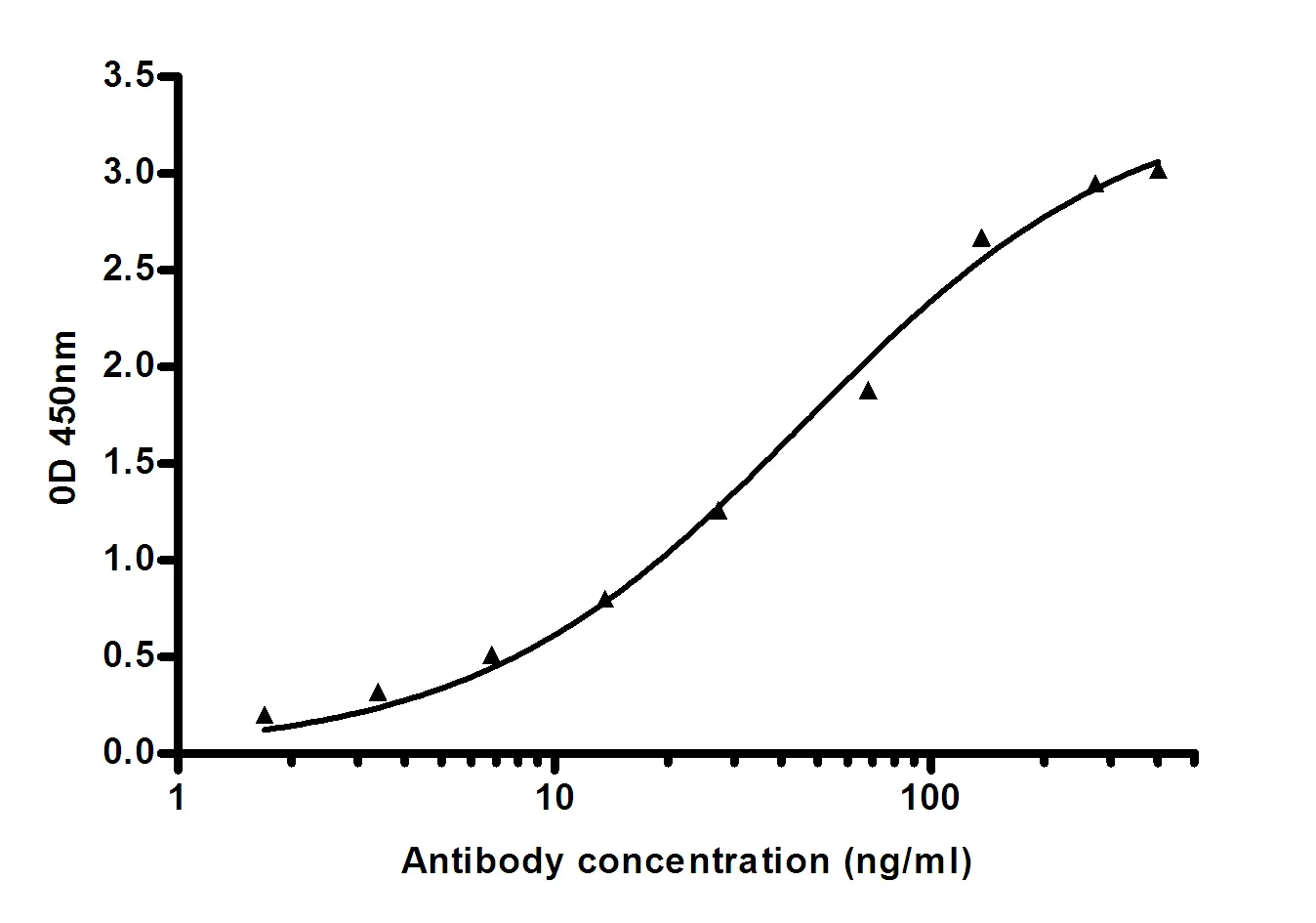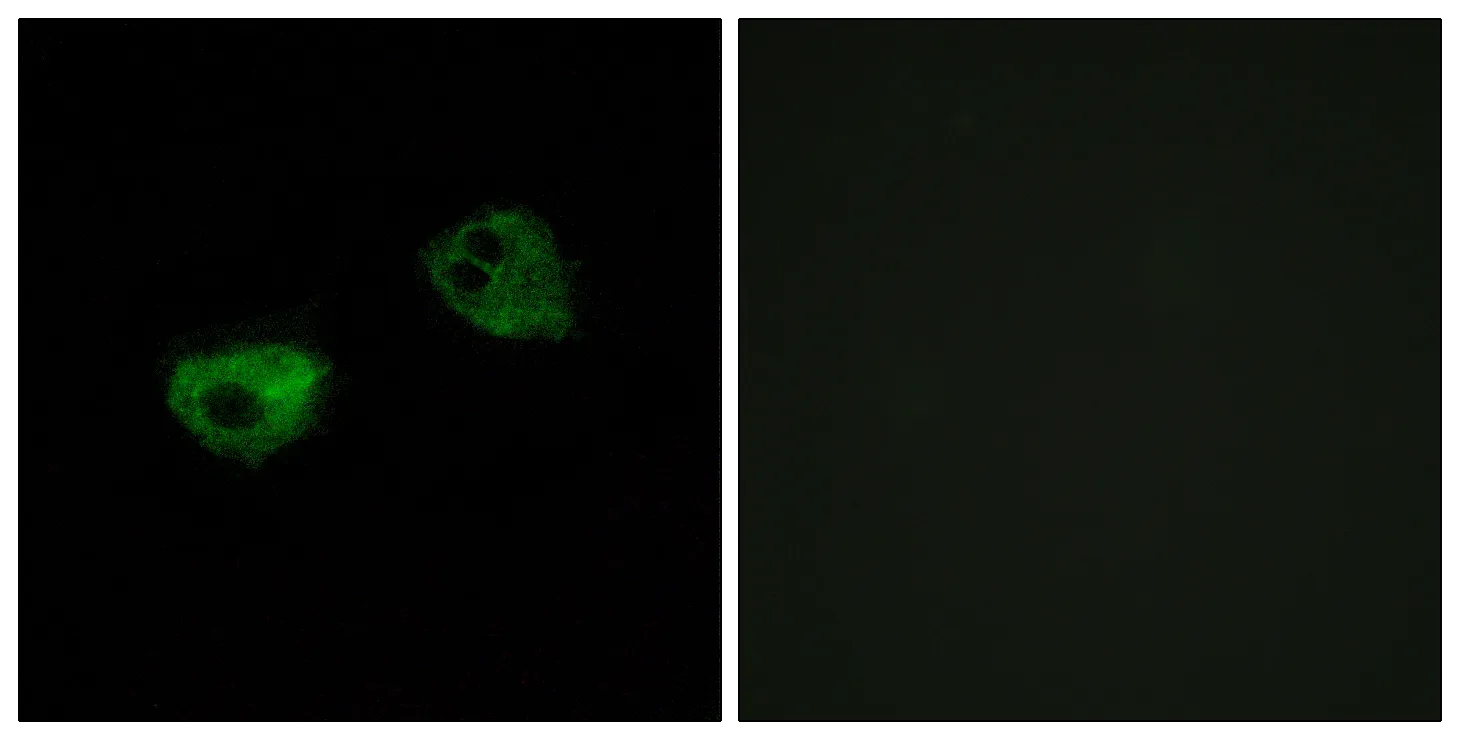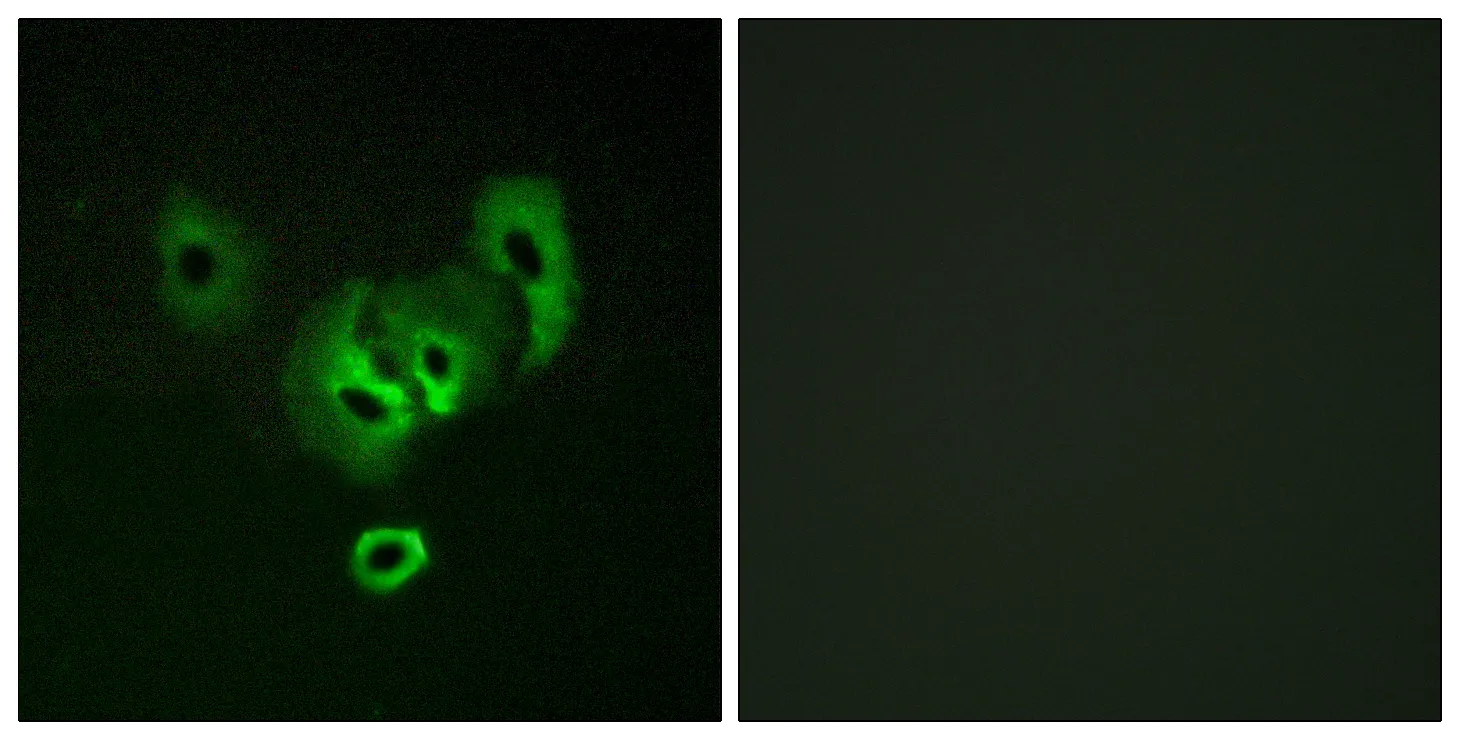Summary
Performance
Immunogen
Application
Background
caution:It is not known whether the so-called human ASE1 and human CAST proteins represent two sides of a single gene product with sharply different functional characteristics. Experiments done with the mouse homolog protein are in favor of an implication of this gene in rRNA transcription instead of T-cell receptor signaling.,function:DNA-dependent RNA polymerase catalyzes the transcription of DNA into RNA using the four ribonucleoside triphosphates as substrates. Component of RNA polymerase I which synthesizes ribosomal RNA precursors. Isoform 1 is involved in UBTF-activated transcription, presumably at a step following PIC formation.,function:Isoform 2 has been described as a component of preformed T-cell receptor (TCR) complex.,miscellaneous:It is in an antisense orientation to and overlaps the gene of the DNA repair enzyme ERCC1. This gene overlap is conserved in mouse suggesting an important biologic function.,PTM:Isoform 1 is phosphorylated on tyrosine residues in initiation-competent Pol I-beta complexes but not in Pol I-alpha complexes.,PTM:Isoform 2 undergoes tyrosine phosphorylation upon T-cell receptor (TCR) stimulation. This phosphorylation has not been confirmed by other group.,PTM:Phosphorylated upon DNA damage, probably by ATM or ATR.,similarity:Belongs to the eukaryotic RPA34 RNA polymerase subunit family.,subcellular location:Found at the fibrillar centers of the nucleolus in interphase and during cell division it is localized to the nucleolus organizer regions of the chromosomes.,subunit:Component of the RNA polymerase I (Pol I) complex consisting of at least 13 subunits. Interacts with TAF1A thereby associates with the SL1 complex. Interacts with UBTF. Interacts with POLR1E/PRAF1 through its N-terminal region (By similarity). Isoform 2 interacts with CD3E.,caution:It is not known whether the so-called human ASE1 and human CAST proteins represent two sides of a single gene product with sharply different functional characteristics. Experiments done with the mouse homolog protein are in favor of an implication of this gene in rRNA transcription instead of T-cell receptor signaling.,function:DNA-dependent RNA polymerase catalyzes the transcription of DNA into RNA using the four ribonucleoside triphosphates as substrates. Component of RNA polymerase I which synthesizes ribosomal RNA precursors. Isoform 1 is involved in UBTF-activated transcription, presumably at a step following PIC formation.,function:Isoform 2 has been described as a component of preformed T-cell receptor (TCR) complex.,miscellaneous:It is in an antisense orientation to and overlaps the gene of the DNA repair enzyme ERCC1. This gene overlap is conserved in mouse suggesting an important biologic function.,PTM:Isoform 1 is phosphorylated on tyrosine residues in initiation-competent Pol I-beta complexes but not in Pol I-alpha complexes.,PTM:Isoform 2 undergoes tyrosine phosphorylation upon T-cell receptor (TCR) stimulation. This phosphorylation has not been confirmed by other group.,PTM:Phosphorylated upon DNA damage, probably by ATM or ATR.,similarity:Belongs to the eukaryotic RPA34 RNA polymerase subunit family.,subcellular location:Found at the fibrillar centers of the nucleolus in interphase and during cell division it is localized to the nucleolus organizer regions of the chromosomes.,subunit:Component of the RNA polymerase I (Pol I) complex consisting of at least 13 subunits. Interacts with TAF1A thereby associates with the SL1 complex. Interacts with UBTF. Interacts with POLR1E/PRAF1 through its N-terminal region (By similarity). Isoform 2 interacts with CD3E.,
Research Area




